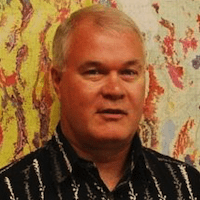
Research Professor
Electromagnetic Geophysics Energy & Geoscience Institute
University of Utah
| 1994 - Present | Research Professor | University of Utah/EGI |
| 1983 - 1994 | Senior Scientist | University of Utah Research Institute |
| 1983 | Ph.D., Geophysics | University of Utah, Dept. of Geology and Geophysics |
| 1976 | B.Sc., Engrg Geology | Queen’s University, Kingston, Canada |
| 2015 | Featured Graphic | U.S. Cascadia MT Resistivity Synthesis, Future Geophysics Facilities Report to NSF |
| 2013 | Presenter | Earthscope National Meeting, Workshop on MT TA Regional Site Selection (SE Appalachians chosen) |
| 2009 - 2010 | In-Field Coordinator | MT TA site selection, permitting and deployment, NW Intermontane region |
| 2007 - 2009 | Chair | IRIS/Earthscope Electromagnetic Working Group (EMWoG) |
| 2005 | Invited Reviewer | MT Studies, First Earthscope National Meeting |
| 1997 - 2007 | Scientist-in-Charge | EMSOC National Instrumentation Facility |
| 2019 | Plenary Speaker | SAGE/GAGE Workshop - Earth in 4D: Advances in Geophysics in Extreme Environments |
| 2016 | Invited Presenter | UNAVCO Workshop on Scientific Drivers and and Future of Mount Erebus Observatory (MEVO), Antartica |
| 2014 | PI/Co-I | Integrated CAFE/EMSLAB/KLAMATH Cascadia MT transects, published GGG |
| 2011 | Attendee | Earthscope-GeoPRISMS Science Workshop on Eastern North America (ENAM) |
| 2011 | Fellow | Geological Society of America |
| 2006 | Attendee | Earthscope Workshop on Integrated Geologic Framework for USArray |
| 1998 - 2002 | Review Panelist | National Science Foundation/Earth Sciences Division/Continental Dynamics |
With the decision to establish a substantial pool of portable magnetotelluric (MT) systems at the PASSCAL Instrument Center (PIC), IRIS, NSF and the earth science community at large have entered a new era. The next few years must see the effective selection of the components of the new instrumentation pool through competitive evaluation of commercial vendor products, and integration of the MT pool within the PIC with effective deployment and support for projects including international collaboration. It is essential to ensure education of earth scientists both as MT specialists and as integrative practitioners. We must expand our vision for the potential of MT whether as an individual technique or in cooperative interpretations with seismology and broader geoscience.
I believe the breadth of my career interests, collaborations and accomplishments are an advantage for serving on the IRIS Board of Directors. These include seminal advances in multidimensional MT model computation, and the planning and execution of major field campaigns both in the U.S. and internationally with impactful dissemination of results. Our research group at Utah in particular pioneered collection capability for high-fidelity MT data over polar ice sheets leading to several international collaborations in Antarctica illuminating orogenic processes and volcanogenic architecture. Transitions in institutional resources for U.S. geophysics over the next several years need careful handling for the sake of our new generations of Earth scientists. It is an honor to stand for election to this important position.